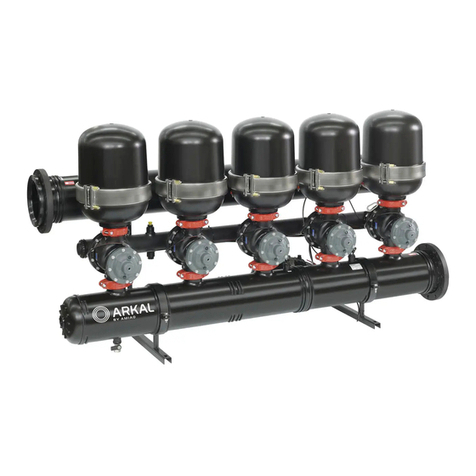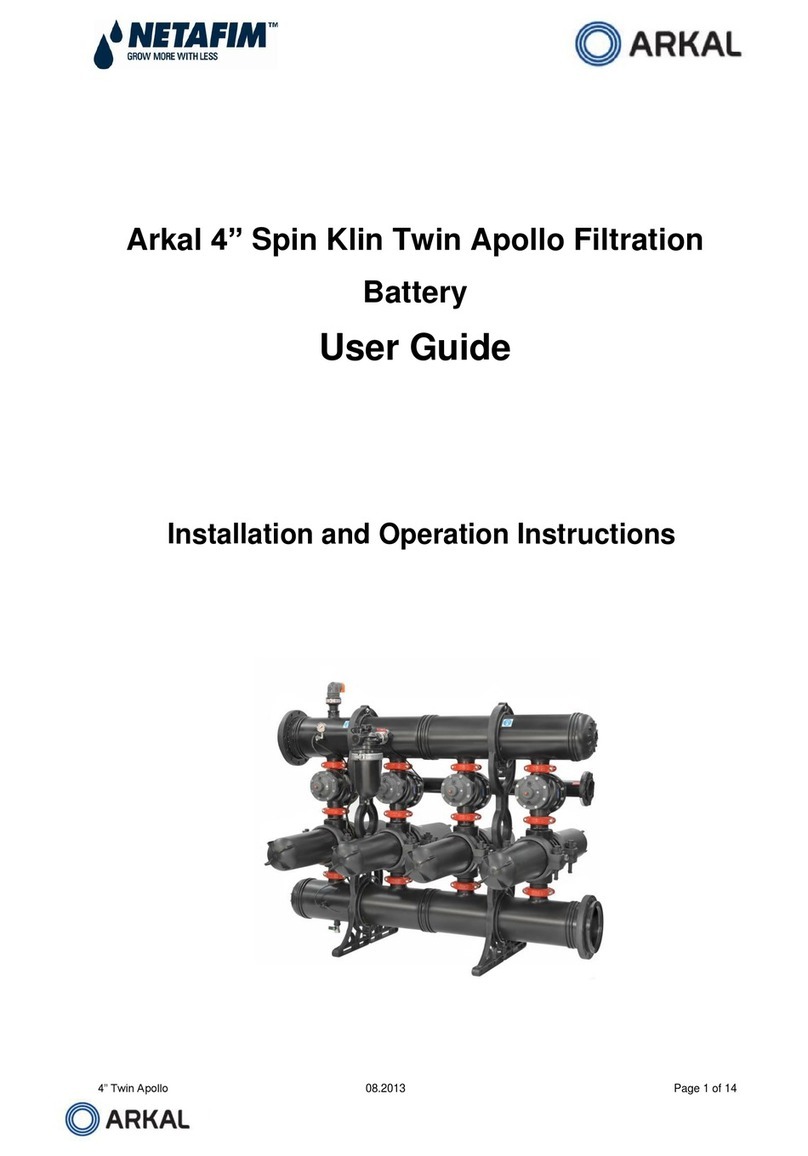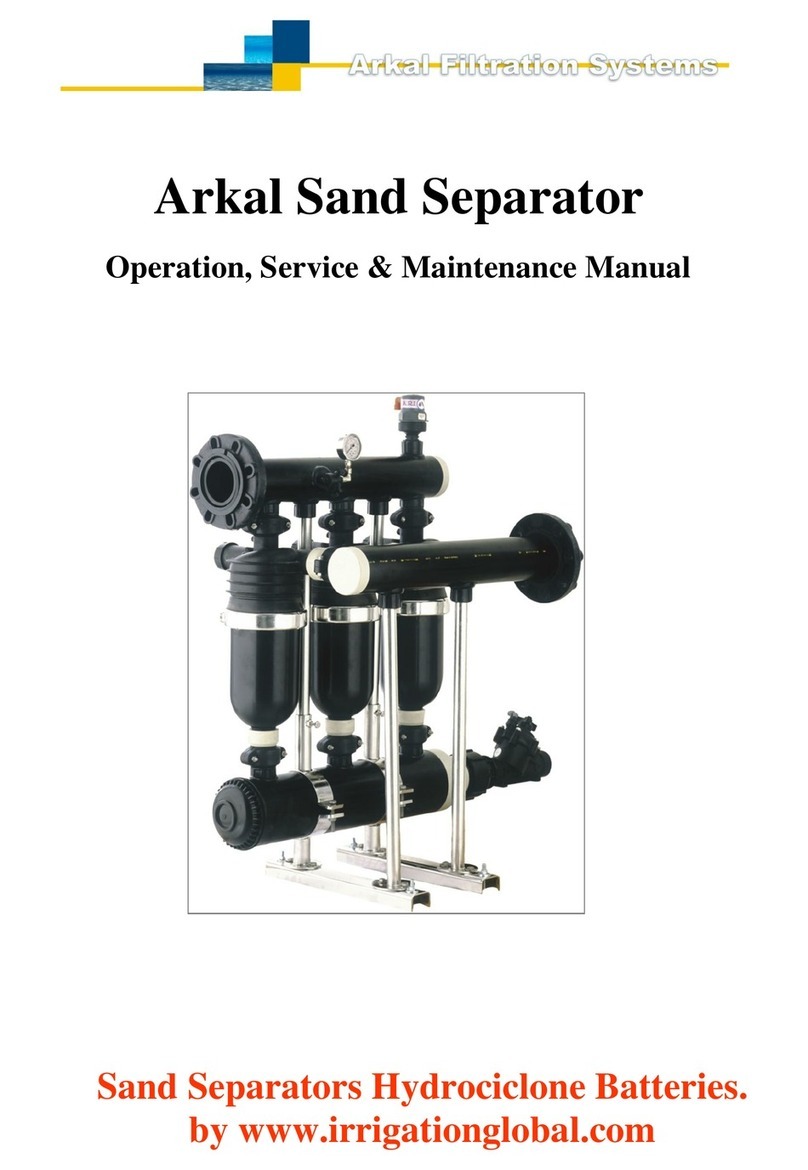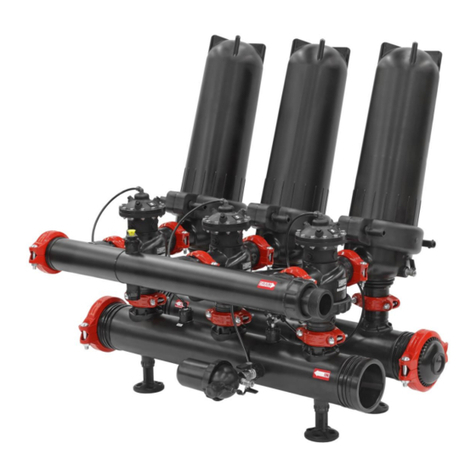
SERIES-B
-5-
Filter Operation General Description (Figure 1)
Water enters the filter through the “Inlet” (1). The water then reaches the fine screen (2),
which purifies the flow by separating smaller particles from the water. As more water
flows through, impurities build up on the fine screen.
As impurities on the screen accumulate, a pressure imbalance is built up between the
internal section of the fine Screen (2) and its external section.
When the difference in pressure (∆P) reaches the preset value on the electronic control unit
(3), a series of events is triggered while water continues to flow to the system units. The
flushing valve (4) opens, pressure is released from the hydraulic piston (5), and water
flows outside. Pressure in the hydraulic motor chamber (6) and the dirt collector (7) is
significantly lowered, and the dirt collector nozzles (8) begin a suction process. The water
flows through the hydraulic motor (9), which rotates the dirt collector (7) around its axis.
The pressure released from the piston and the high pressure inside the filter, cause linear
movement of the dirt collector. The combination of the linear movement and rotation
significantly cleans the whole internal screen surface. The flushing cycle takes
5 seconds. The flushing valve (4) closes at the end of the cycle and the increased
water pressure returns the system to its initial position. The filter is now ready for the
next cycle, with clean and filtered water flowing through the “Outlet” (12).
General Description of the Electronic Control System (Figure 1)
The electrical system controls the cleaning process through the differential pressure indicator (10),
that closes a circuit and triggers the electronic control unit (3) that controls the opening and the
closing of the flushing valve (4) via the solenoid valve (11). The flushing cycle, which
takes a total of 5 seconds, resumes its operation whenever the difference in
pressure reaches the preset pressure value set on the differential pressure indicator. If
the difference in pressure remains unchanged after one cycle, another cycle will start after a delay
of 25 seconds.
Figure 1: Filter Assembly
10
456
7
11
3
12
12
8
9
































